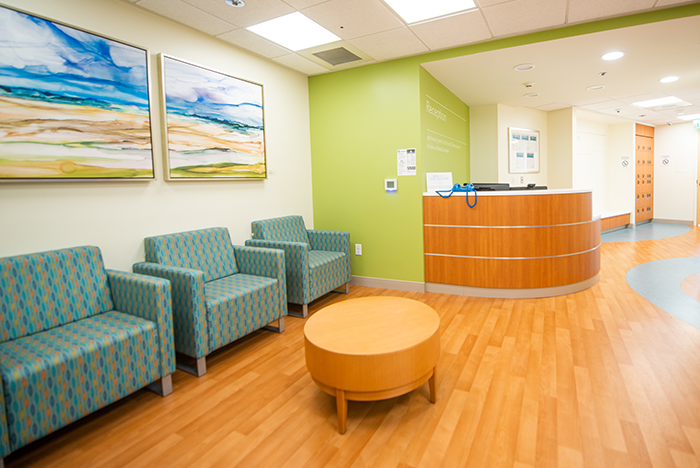Designing ED spaces for behavioral care
Designing for behavioral health patients has become a hot topic, particularly as it relates to the emergency department (ED), as evidenced by several research studies from The Center for Health Design’s Knowledge Repository.
A recent special report by Shaw highlighted challenges associated with boarding psychiatric patients in the ED. Due to a shortage of both psychiatric providers and beds, individuals presenting with behavioral health crises might board in the ED for hours or days, creating care backlogs and frustration among both patients and staff. Some facilities have had success associating an emergency psychiatric assessment, treatment and healing (EmPATH) unit with their ED services. EmPATH units vary in design and location but share a focus on stabilizing and promptly initiating treatment for behavioral patients in environments that evoke perceptions of safety where they are allowed to move freely, access nutrition and engage in an array of therapeutic activities. The three studies below provide additional details on this innovative care strategy:
Zeller and colleagues first introduced the notion of a therapeutic space for behavioral patients in California. Initially called The Alameda Model, this approach began with a medical screening at one of 11 EDs. Once a patient was determined to be stable for psychiatry, they were transferred to the psychiatric emergency services (later EmPATH) unit for treatment. The approach was associated with a reduction in behavioral patient ED boarding from 10 hours to less than two hours and a reduction in inpatient psychiatric hospitalizations by as much as 75%.
Subsequently, a team led by Kim studied the impact of EmPATH unit implementation at a facility serving rural areas in Iowa, Missouri and Illinois. After medical evaluation by an ED provider, eligible behavioral patients were transferred to the EmPATH unit, where specially trained staff stabilized and treated patients in an open-concept layout featuring recliners, restrooms, laundry and a calming room. The research team focused on patients presenting to the ED with complaints of suicidal ideation or attempt before and after EmPATH unit implementation. Findings demonstrated a significant reduction in inpatient psychiatric admissions (57.1% to 27.3%), lower 30-day return to ED rates and a 60% increase in scheduling post-discharge follow-up appointments.
Finally, Stamy and colleagues conducted an economic evaluation of an EmPATH unit to determine its impact on ED revenue at six months post-implementation and annually. The EmPATH unit was situated in a Midwestern academic medical center and employed specially trained staff. The 2,900-square-foot, open-bay unit featured recliners, meeting tables and a centralized nursing station. Although patients could be directly admitted to the unit, most were screened in the ED and medically cleared prior to transfer. In the six months after EmPATH unit implementation, the researchers estimated an increase in net ED revenue of $404,954 (and $861,065 annually), which could be directly attributed to the new unit.
Efficiently connecting behavioral patients who present through the ED with the providers and features they need improves ED throughput and expedites appropriate treatment. Articles on this and other health care design topics can be accessed at The Center for Health Design’s Knowledge Repository.
Research used for this column
The following research citations from The Center for Health Design’s Knowledge Repository of health care design resources were used by the author when writing this column:
- G. Shaw, “Behavioral Care Isn’t Just about Disposition,” Emergency Medicine News, vol. 46, no. 6 (2024).
- S. Zeller, N. Calma and A. Stone, “Effects of a Dedicated Regional Psychiatric Emergency Service on Boarding of Psychiatric Patients in Area Emergency Departments,” Western Journal of Emergency Medicine, vol. 15, no. 1 (2014).
- A. K. Kim et al., “Emergency Psychiatric Assessment, Treatment, and Healing (EmPATH) Unit Decreases Hospital Admission for Patients Presenting with Suicidal Ideation in Rural America,” Academic Emergency Medicine, vol. 29, no. 2 (2022).
- C. Stamy et al., “Economic Evaluation of the Emergency Department after Implementation of an Emergency Psychiatric Assessment, Treatment, and Healing Unit,” Academic Emergency Medicine, vol. 28, no. 1 (2021).
About this column
“Design Discoveries” highlights research from The Center for Health Design’s Knowledge Repository, a user-friendly library of health care design resources. This research effort is supported by the American Society for Health Care Engineering, the American Institute of Architects, the Academy of Architecture for Health Foundation and the Facility Guidelines Institute. It can be accessed at healthdesign.org/knowledge-repository.
Yolanda Keys, Ph.D., R.N., EDAC, research associate, The Center for Health Design.


